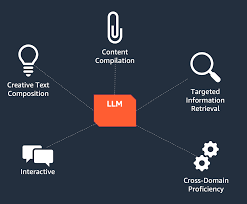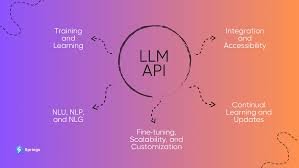Introduction: Understanding What Can LLM API Be Used For
The rise of machine learning technologies has paved the way for numerous innovative applications across different sectors. One of the most powerful tools in this evolution is the LLM (Large Language Model) API. If you’re wondering, what can LLM API be used for, you’re in the right place. This article explores how LLM APIs are being utilized today and how they are shaping industries, enhancing user experiences, and solving complex problems.
Large Language Models are designed to understand, generate, and manipulate human language at an advanced level. With APIs that provide access to these models, developers can integrate such capabilities into their applications, making them smarter and more efficient. But just what can LLM API be used for in practical terms?
Table of Contents
What Is LLM API and How Does It Work?
Before diving into specific use cases, it’s important to understand what an LLM API is. At its core, an LLM API is an interface that allows developers to send text-based requests to a pre-trained large language model. The model processes the input and returns a relevant response. These APIs leverage natural language processing (NLP) and deep learning algorithms to comprehend context, generate text, and perform tasks that require a high level of linguistic understanding.
The primary purpose of an LLM API is to bridge the gap between complex language models and real-world applications. This enables developers to leverage the power of LLMs without needing in-depth knowledge of machine learning or extensive computational resources.
Now, let’s explore what can LLM API be used for in various fields.
Automating Customer Support with LLM API
One of the most common uses of an LLM API is in customer support automation. Traditionally, customer service agents spend significant time responding to common queries and assisting with basic troubleshooting. However, integrating an LLM API into a customer support system can significantly streamline this process.
By using an LLM API, businesses can create virtual assistants or chatbots that respond to customer inquiries efficiently and in a human-like manner. These systems can handle complex queries, provide instant responses, and improve customer satisfaction by reducing wait times. Additionally, the API can be fine-tuned to match the company’s tone and voice, further enhancing the experience.
Thus, what can LLM API be used for in customer support is the creation of intelligent, automated solutions that scale easily and improve operational efficiency.
Enhancing Content Creation with LLM API

Another exciting area where what can LLM API be used for is content creation. The demand for high-quality, engaging content has surged, and businesses across various sectors need to create blog posts, social media updates, product descriptions, and other written materials regularly. Manually writing such content can be time-consuming and resource-intensive.
By utilizing an LLM API, companies can automate parts of the content creation process. The API can generate ideas, assist in writing articles, or even create complete blog posts from scratch based on a given topic. The ability to generate content rapidly and at scale is especially valuable in industries where timely updates and fresh content are essential.
Moreover, LLM APIs can be used to enhance creativity in writing. They can suggest new phrases, help with rephrasing, and even assist in writing persuasive sales copy. Therefore, the question what can LLM API be used for is answered in content creation as a tool for efficiency and innovation.
Improving Language Translation with LLM API
Language translation has become a critical aspect of global communication. Traditional translation tools have limitations, especially when it comes to understanding nuances, idioms, and regional variations. However, with an LLM API, translation services have become more advanced and accurate.
LLM APIs can process complex language structures and provide more contextually accurate translations. They can even be used to create real-time translation systems, enabling users to communicate effectively across different languages without a significant delay. Businesses can leverage LLM APIs to offer localized content, reaching wider audiences and improving customer relations worldwide.
Thus, one of the key answers to what can LLM API be used for is improving the quality of language translation services, enhancing cross-cultural communication.
Personalizing User Experiences with LLM API
In the digital age, personalization is crucial for keeping customers engaged. With vast amounts of user data available, companies can tailor their services and content to individual preferences. This is where an LLM API plays a key role.
By integrating an LLM API, businesses can personalize user experiences based on interactions. For instance, e-commerce platforms can recommend products, offer customized promotions, or generate personalized emails by analyzing past customer behaviors. Similarly, streaming services can recommend movies and shows based on a user’s viewing history and preferences.
In this context, what can LLM API be used for is enhancing personalization strategies, leading to better user engagement and satisfaction.
Conducting Sentiment Analysis with LLM API
Understanding how customers feel about products, services, or brands is critical for businesses. Sentiment analysis is a technique used to determine the emotional tone of text, such as social media posts, reviews, or customer feedback. LLM APIs are particularly well-suited for this task.
By processing large volumes of unstructured text, LLM APIs can accurately assess sentiment, detecting whether the content expresses positive, negative, or neutral emotions. This can provide valuable insights into customer perceptions, allowing businesses to improve their offerings and address potential issues promptly.
So, the answer to what can LLM API be used for in sentiment analysis is to gain deeper insights into public opinion, enabling more effective decision-making.
Assisting with Code Generation and Debugging with LLM API
In the field of software development, LLM APIs are gaining traction for their ability to assist with code generation and debugging. Writing and debugging code is a complex and time-consuming process, but LLM APIs can help speed up these tasks.
Developers can use an LLM API to generate code snippets, provide suggestions for solving coding problems, and even help debug errors. By simply describing the issue or providing the desired output, a developer can receive helpful code solutions. This reduces the learning curve for newcomers to programming and improves productivity for experienced developers.
In this case, what can LLM API be used for is to assist developers in writing and debugging code, making programming more efficient.
Conducting Market Research with LLM API

Another powerful application of what can LLM API be used for is in market research. Collecting and analyzing market data manually can be overwhelming, especially when dealing with vast amounts of online information such as news articles, blogs, and reviews.
LLM APIs can process this data quickly, extracting relevant insights and trends that can help businesses make informed decisions. The API can identify emerging trends, consumer preferences, competitor strategies, and potential gaps in the market. By automating the research process, businesses can gain a competitive edge without the need for extensive manual labor.
Therefore, market research is another area where what can LLM API be used for is directly beneficial.
Enhancing Search Engine Functionality with LLM API
The use of LLM APIs in enhancing search engines is a prime example of how natural language processing can improve the quality of search results. Modern search engines rely heavily on algorithms that match queries with relevant content. However, these algorithms are often limited when it comes to understanding the context or nuances behind a search query.
LLM APIs can improve this by understanding the intent behind a query, even when it is vague or ambiguous. By processing the natural language more effectively, search engines can return more accurate and contextually relevant results, thus improving the overall search experience for users.
So, what can LLM API be used for in the realm of search engine optimization is to enhance the search functionality and deliver more accurate results.
Also read Human Gathering Cult: Understanding Its Dynamics and Implications
Conclusion: The Many Uses of LLM API
As we’ve explored throughout this article, there are countless ways what can LLM API be used for in modern applications. From automating customer support and enhancing content creation to improving translation services, personalization, and sentiment analysis, LLM APIs are transforming industries. Their ability to process and understand human language makes them invaluable for businesses seeking efficiency, scalability, and innovation.
In summary, what can LLM API be used for is far-reaching, offering benefits across numerous domains. Whether you’re a business owner, developer, or researcher, the potential applications of LLM APIs are vast and growing every day. As these technologies continue to evolve, their influence will only increase, offering even more opportunities for automation, personalization, and intelligent decision-making.


